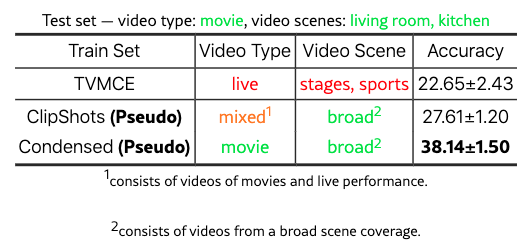
第四章:C++与现代开发实践
第三节:多线程与并发编程
在这一课中,我们将详细探讨多线程与并发编程的各个方面,特别是从线程的创建、管理到高级的优化技术,并且通过复杂的实战案例来展示如何应对并发问题。最后,我们会通过一个项目实践展示如何将这些理论应用到实际开发中。
1. 线程的创建、管理与优化
多线程编程中的核心之一是如何有效地创建和管理线程,并对其性能进行优化。在C++中,C++11标准引入了原生的线程支持,使得多线程编程更加直接和高效。
1.1 线程的创建
C++11提供了 std::thread 类来实现多线程编程,创建线程非常方便,但在实际开发中,我们经常遇到比简单的函数调用更复杂的需求。
1.1.1 创建带参数的线程
我们可以通过 std::thread 的构造函数直接传递参数,这在实际开发中非常有用。例如,当我们需要启动多个任务并为每个任务传递不同的参数时,这种方式能够简化代码。
#include <iostream>
#include <thread>
#include <vector>
void task(int id, const std::string& message) {
std::cout << "Task " << id << ": " << message << std::endl;
}
int main() {
std::vector<std::thread> threads;
for (int i = 0; i < 5; ++i) {
threads.emplace_back(task, i, "Hello from thread");
}
for (auto& th : threads) {
th.join();
}
return 0;
}
1.1.2 使用 std::bind 和 lambda 表达式创建线程
C++11 引入的 std::bind 和 lambda 表达式可以极大提高代码的灵活性。当我们需要传递额外的上下文或处理一些复杂逻辑时,这些功能尤其有用。
#include <iostream>
#include <thread>
#include <functional>
#include <string>
void printMessage(const std::string& message, int count) {
for (int i = 0; i < count; ++i) {
std::cout << message << std::endl;
}
}
int main() {
std::string msg = "Hello from lambda!";
int repeat = 3;
std::thread t1(std::bind(printMessage, msg, repeat));
std::thread t2([msg, repeat]() {
for (int i = 0; i < repeat; ++i) {
std::cout << msg << std::endl;
}
});
t1.join();
t2.join();
return 0;
}
在这个示例中,我们通过 std::bind 绑定了函数参数,同时使用了 lambda 表达式直接定义了一个线程内的任务。
1.1.3 使用类成员函数作为线程入口
当需要在类中使用线程时,直接调用类的成员函数是常见的做法。然而,由于成员函数有一个隐式的 this 指针,因此需要特别处理。在 C++11 中,我们可以使用 std::bind 或 lambda 表达式来传递成员函数。
#include <iostream>
#include <thread>
class Worker {
public:
void doWork(int id) {
std::cout << "Worker " << id << " is working..." << std::endl;
}
};
int main() {
Worker worker;
std::thread t(&Worker::doWork, &worker, 1); // 使用成员函数
t.join();
return 0;
}
在这个例子中,std::thread 能够直接调用类的成员函数,注意我们需要传递 this 指针来调用非静态成员函数。
1.2 线程管理
线程的管理包括如何合理地创建、销毁线程以及如何协调线程之间的工作。以下是一些常见的线程管理技术。
1.2.1 join() 和 detach()
-
join():调用join()会阻塞当前线程,直到目标线程完成为止。这是最常见的等待线程完成的方法。 -
detach():当线程被分离时,它将在后台独立运行,不再与主线程同步。如果线程对象在没有调用join()或detach()的情况下销毁,会导致程序崩溃。
#include <iostream>
#include <thread>
void task() {
std::this_thread::sleep_for(std::chrono::seconds(1));
std::cout << "Task done!" << std::endl;
}
int main() {
std::thread t(task);
t.detach(); // 分离线程
std::this_thread::sleep_for(std::chrono::seconds(2)); // 等待任务完成
return 0;
}
1.2.2 使用线程池管理线程
在现代开发中,频繁创建和销毁线程会导致性能问题。为了解决这个问题,线程池成为了一种有效的解决方案。线程池通过预先创建固定数量的线程来处理任务,避免了线程创建和销毁的开销。
C++标准库并未提供原生的线程池实现,但我们可以通过 std::thread 和任务队列来实现一个简单的线程池。
#include <iostream>
#include <vector>
#include <queue>
#include <thread>
#include <functional>
#include <condition_variable>
class ThreadPool {
public:
ThreadPool(size_t numThreads);
~ThreadPool();
void enqueue(std::function<void()> task);
private:
std::vector<std::thread> workers;
std::queue<std::function<void()>> tasks;
std::mutex queueMutex;
std::condition_variable condition;
bool stop;
};
ThreadPool::ThreadPool(size_t numThreads) : stop(false) {
for (size_t i = 0; i < numThreads; ++i) {
workers.emplace_back([this] {
while (true) {
std::function<void()> task;
{
std::unique_lock<std::mutex> lock(this->queueMutex);
this->condition.wait(lock, [this] {
return this->stop || !this->tasks.empty();
});
if (this->stop && this->tasks.empty())
return;
task = std::move(this->tasks.front());
this->tasks.pop();
}
task();
}
});
}
}
ThreadPool::~ThreadPool() {
{
std::unique_lock<std::mutex> lock(queueMutex);
stop = true;
}
condition.notify_all();
for (std::thread &worker : workers) {
worker.join();
}
}
void ThreadPool::enqueue(std::function<void()> task) {
{
std::unique_lock<std::mutex> lock(queueMutex);
tasks.push(std::move(task));
}
condition.notify_one();
}
int main() {
ThreadPool pool(4);
for (int i = 0; i < 8; ++i) {
pool.enqueue([i] {
std::cout << "Task " << i << " is being processed." << std::endl;
});
}
std::this_thread::sleep_for(std::chrono::seconds(2)); // 等待任务完成
return 0;
}
这个简单的线程池实现允许我们将任务添加到队列中,并由固定数量的线程来处理它们。
1.3 线程同步
多线程编程中,线程同步是至关重要的。共享资源的并发访问可能会导致数据竞争(race condition)。C++提供了多种同步机制来防止此类问题。
1.3.1 使用 std::mutex 进行线程同步
std::mutex 是一种基本的同步原语,用于在多个线程之间保护共享资源。通过加锁机制,确保同一时刻只有一个线程能够访问某个资源。
#include <iostream>
#include <thread>
#include <mutex>
std::mutex mtx;
void printSafe(const std::string& message) {
std::lock_guard<std::mutex> lock(mtx); // 自动加锁和解锁
std::cout << message << std::endl;
}
int main() {
std::thread t1(printSafe, "Thread 1: Safe printing");
std::thread t2(printSafe, "Thread 2: Safe printing");
t1.join();
t2.join();
return 0;
}
在上面的例子中,我们使用 std::mutex 来确保同一时间只有一个线程能够执行 printSafe 函数,防止输出混乱。
1.3.2 动态内存的管理策略与技巧
动态内存管理是 C++ 编程中的一个重要概念,它直接影响程序的性能、稳定性和可维护性。在现代 C++ 中,合理的内存管理策略能够有效避免内存泄漏、悬空指针和其他潜在问题。以下是一些常用的动态内存管理策略和技巧。
1.3.2.1 使用智能指针
智能指针是 C++11 引入的重要特性,主要包括 std::unique_ptr、std::shared_ptr 和 std::weak_ptr。这些智能指针提供了自动的内存管理,有效避免了手动管理内存时可能出现的错误。
1. std::unique_ptr
std::unique_ptr 表示对动态分配对象的独占所有权。它确保在其作用域结束时自动释放内存。示例如下:
#include <iostream>
#include <memory>
void uniquePtrExample() {
std::unique_ptr<int> ptr = std::make_unique<int>(42);
std::cout << "Value: " << *ptr << std::endl; // 输出:Value: 42
// 不需要手动 delete,ptr 超出作用域后会自动释放
}
2. std::shared_ptr
std::shared_ptr 允许多个指针共享同一个对象。当最后一个 shared_ptr 被销毁时,才会释放对象。它适用于多个所有者的场景。
#include <iostream>
#include <memory>
void sharedPtrExample() {
std::shared_ptr<int> ptr1 = std::make_shared<int>(42);
{
std::shared_ptr<int> ptr2 = ptr1; // 共享所有权
std::cout << "Value: " << *ptr2 << std::endl; // 输出:Value: 42
} // ptr2 超出作用域,ptr1 仍然存在
std::cout << "Value after ptr2 scope: " << *ptr1 << std::endl; // 仍然可用
}
3. std::weak_ptr
std::weak_ptr 与 std::shared_ptr 配合使用,解决了循环引用的问题。它不拥有对象的所有权,因此不会影响引用计数。
#include <iostream>
#include <memory>
class Node {
public:
std::shared_ptr<Node> next;
~Node() { std::cout << "Node destroyed\n"; }
};
void weakPtrExample() {
std::shared_ptr<Node> node1 = std::make_shared<Node>();
std::weak_ptr<Node> weakNode = node1; // 不增加引用计数
std::cout << "Use count: " << weakNode.use_count() << std::endl; // 输出:1
}
1.3.2.2 内存池的使用
内存池是一种高效的内存管理策略,特别适用于频繁分配和释放小块内存的场景。通过预先分配一块大内存,内存池能够减少内存分配和释放的开销。
#include <iostream>
#include <vector>
class MemoryPool {
public:
MemoryPool(size_t blockSize, size_t blockCount)
: blockSize(blockSize), pool(blockCount * blockSize) {
for (size_t i = 0; i < blockCount; ++i) {
freeBlocks.push_back(&pool[i * blockSize]);
}
}
void* allocate() {
if (freeBlocks.empty()) return nullptr;
void* block = freeBlocks.back();
freeBlocks.pop_back();
return block;
}
void deallocate(void* block) {
freeBlocks.push_back(block);
}
private:
size_t blockSize;
std::vector<char> pool;
std::vector<void*> freeBlocks;
};
1.3.2.3 使用内存监控工具
动态内存管理的另一个重要方面是内存监控。使用工具(如 Valgrind、AddressSanitizer 和 Visual Studio 的内存分析器)能够帮助开发者检测内存泄漏、越界访问和其他内存相关问题。
-
Valgrind:这是一个强大的工具,用于检测内存泄漏和错误。
valgrind --leak-check=full ./your_program -
AddressSanitizer:这是一个编译器提供的工具,能够在运行时检测内存错误。只需在编译时添加
-fsanitize=address。
1.3.2.4 避免不必要的动态内存分配
在设计程序时,应尽量减少动态内存分配,尤其是在性能敏感的代码路径中。可以考虑以下策略:
- 使用栈分配:如果对象的生命周期相对短暂且大小可预见,尽量使用栈分配。
- 预分配内存:对于重复使用的对象,考虑在程序启动时预分配所需内存。
1.3.2.5 编写 RAII 风格的类
RAII(资源获取即初始化)是一种常用的内存管理技术,它通过类的构造和析构函数自动管理资源。编写 RAII 风格的类,能够确保资源在不再需要时自动释放。
#include <iostream>
#include <fstream>
class FileHandler {
public:
FileHandler(const std::string& filename) : file(filename) {
if (!file.is_open()) {
throw std::runtime_error("Failed to open file");
}
}
~FileHandler() {
if (file.is_open()) {
file.close();
}
}
private:
std::ofstream file;
};
通过上述策略和技巧,开发者能够更有效地管理动态内存,减少内存相关错误,提高程序的性能和稳定性。
1.3.3 使用条件变量 std::condition_variable
条件变量是一种更高级的线程同步工具,能够让一个或多个线程等待某个条件的满足。通过条件变量,可以在不忙等(busy waiting)的情况下,使线程在某些条件下等待并被通知。
条件变量通常与 std::mutex 结合使用:线程等待某个条件(如队列不为空),当条件满足时,通知等待线程继续执行。
示例:生产者-消费者模式
生产者-消费者模式是多线程编程中常见的一种应用场景。在这种模式中,生产者线程向队列中添加数据,消费者线程从队列中取出数据进行处理。
#include <iostream>
#include <thread>
#include <mutex>
#include <condition_variable>
#include <queue>
std::queue<int> buffer;
std::mutex mtx;
std::condition_variable cv;
bool finished = false;
void producer(int items) {
for (int i = 0; i < items; ++i) {
std::this_thread::sleep_for(std::chrono::milliseconds(100)); // 模拟生产
std::unique_lock<std::mutex> lock(mtx);
buffer.push(i);
std::cout << "Produced: " << i << std::endl;
cv.notify_one(); // 通知消费者有新的数据
}
std::unique_lock<std::mutex> lock(mtx);
finished = true;
cv.notify_all(); // 通知所有消费者生产结束
}
void consumer() {
while (true) {
std::unique_lock<std::mutex> lock(mtx);
cv.wait(lock, [] { return !buffer.empty() || finished; });
while (!buffer.empty()) {
int item = buffer.front();
buffer.pop();
std::cout << "Consumed: " << item << std::endl;
}
if (finished && buffer.empty()) break; // 如果生产者结束并且队列为空,则退出
}
}
int main() {
std::thread prod1(producer, 10);
std::thread cons1(consumer), cons2(consumer);
prod1.join();
cons1.join();
cons2.join();
return 0;
}
在这个例子中,生产者生产一定数量的任务,放入队列中。消费者线程从队列中获取任务并处理。通过 std::condition_variable 实现了生产者与消费者之间的高效同步。cv.notify_one() 和 cv.notify_all() 分别用于通知一个或所有等待线程。
1.4 线程优化技巧
优化多线程程序是并发编程中最具有挑战性的任务之一。优化不仅包括避免死锁和数据竞争,还涉及到如何高效利用多核处理器。
1.4.1 减少锁的使用
锁的过度使用会导致性能下降,因为线程必须等待锁释放。为了提高性能,我们应该尽可能减少锁的使用,甚至可以通过无锁编程来优化部分代码。
-
分片加锁:将大块的代码分成更小的片段,并在每个片段上使用锁,从而减少锁的持有时间。
-
局部锁:如果锁只需要保护某个局部的数据,可以将锁的作用范围限制到局部变量而非整个函数。
1.4.2 使用 std::shared_mutex 实现读写锁
std::shared_mutex 是 C++17 引入的一种互斥锁,它允许多个线程同时读,但只有一个线程能够写。当多线程程序中读操作远多于写操作时,读写锁能够显著提高性能。
#include <iostream>
#include <shared_mutex>
#include <thread>
#include <vector>
std::shared_mutex rw_mutex;
int shared_data = 0;
void reader(int id) {
std::shared_lock lock(rw_mutex); // 共享锁,多个读者可以同时持有
std::cout << "Reader " << id << ": Read " << shared_data << std::endl;
}
void writer(int id, int value) {
std::unique_lock lock(rw_mutex); // 独占锁,写者独占资源
shared_data = value;
std::cout << "Writer " << id << ": Wrote " << shared_data << std::endl;
}
int main() {
std::vector<std::thread> threads;
// 创建5个读者和2个写者
for (int i = 0; i < 5; ++i) {
threads.emplace_back(reader, i);
}
for (int i = 0; i < 2; ++i) {
threads.emplace_back(writer, i, i * 10);
}
for (auto& th : threads) {
th.join();
}
return 0;
}
在这个例子中,std::shared_mutex 允许多个读线程同时访问共享数据,而写线程需要独占该资源。这样可以显著提高读密集型操作的性能。
1.4.3 使用无锁编程(lock-free programming)
无锁编程是一种高级的并发编程技术,旨在通过避免锁来提高性能。无锁编程依赖于原子操作,C++11 提供了 std::atomic 模板类来实现原子操作。
无锁编程适合在高并发环境下使用,能够减少由于锁竞争引起的性能瓶颈。
#include <iostream>
#include <atomic>
#include <thread>
#include <vector>
std::atomic<int> counter(0);
void increment(int id) {
for (int i = 0; i < 10000; ++i) {
counter.fetch_add(1, std::memory_order_relaxed); // 原子操作
}
}
int main() {
std::vector<std::thread> threads;
for (int i = 0; i < 10; ++i) {
threads.emplace_back(increment, i);
}
for (auto& th : threads) {
th.join();
}
std::cout << "Final counter value: " << counter << std::endl;
return 0;
}
这个例子展示了如何使用 std::atomic 来实现无锁递增操作,避免了传统的互斥锁带来的性能开销。 std::atomic 保证了每个线程都能正确地更新共享变量 counter,从而避免数据竞争。
2. 实战案例分析:解决并发问题
并发编程中,实际遇到的问题往往复杂且多样化。下面我们将通过一个实际的案例,展示如何在高并发环境下解决典型的并发问题。
2.1 案例:高性能日志系统
在大规模服务器应用中,日志记录通常是一个高并发的场景,多个线程同时向日志文件写入数据。如果处理不当,日志系统会成为性能瓶颈,甚至导致数据丢失或写入顺序错误。
需求分析
- 高并发:多个线程同时写入日志。
- 线程安全:确保日志的写入顺序不会错乱。
- 性能优化:避免频繁锁定文件资源,提高日志记录的性能。
实现思路
我们可以使用日志队列和专用的日志线程来实现异步日志系统。所有线程将日志写入到共享队列中,日志线程负责从队列中取出日志并写入文件。这种方式能够减少线程之间的锁竞争,提高性能。
代码实现
#include <iostream>
#include <fstream>
#include <thread>
#include <mutex>
#include <condition_variable>
#include <queue>
#include <string>
#include <atomic>
class AsyncLogger {
public:
AsyncLogger() : stopLogging(false) {
loggingThread = std::thread(&AsyncLogger::logThread, this);
}
~AsyncLogger() {
{
std::unique_lock<std::mutex> lock(queueMutex);
stopLogging = true;
cv.notify_all();
}
loggingThread.join();
}
void log(const std::string& message) {
std::unique_lock<std::mutex> lock(queueMutex);
logQueue.push(message);
cv.notify_one();
}
private:
std::queue<std::string> logQueue;
std::mutex queueMutex;
std::condition_variable cv;
std::atomic<bool> stopLogging;
std::thread loggingThread;
void logThread() {
std::ofstream logFile("log.txt", std::ios::app);
while (!stopLogging || !logQueue.empty()) {
std::unique_lock<std::mutex> lock(queueMutex);
cv.wait(lock, [this] {
return !logQueue.empty() || stopLogging;
});
while (!logQueue.empty()) {
logFile << logQueue.front() << std::endl;
logQueue.pop();
}
}
logFile.close();
}
};
void logMessages(AsyncLogger& logger, int id) {
for (int i = 0; i < 100; ++i) {
logger.log("Thread " + std::to_string(id) + ": Log entry " + std::to_string(i));
}
}
int main() {
AsyncLogger logger;
std::thread t1(logMessages, std::ref(logger), 1);
std::thread t2(logMessages, std::ref(logger), 2);
t1.join();
t2.join();
return 0;
}
2.2 优化并发日志系统
在上述日志系统的实现中,我们通过将日志写入操作异步化,减少了对主线程的阻塞。然而,仍然存在一些可以优化的方面,以进一步提升性能和可靠性。
2.2.1 减少锁的持有时间
在 AsyncLogger 中,std::unique_lock 被用于保护共享日志队列。在实际使用中,锁的持有时间应该尽量缩短,确保在获取锁后尽快完成队列操作。可以通过减少锁的作用范围和使用局部变量来优化。
void logThread() {
std::ofstream logFile("log.txt", std::ios::app);
std::queue<std::string> localQueue; // 本地队列,用于减少锁持有时间
while (!stopLogging || !logQueue.empty()) {
{
std::unique_lock<std::mutex> lock(queueMutex);
cv.wait(lock, [this] {
return !logQueue.empty() || stopLogging;
});
// 移动队列内容到本地队列
localQueue.swap(logQueue);
}
// 在不持有锁的情况下处理本地队列
while (!localQueue.empty()) {
logFile << localQueue.front() << std::endl;
localQueue.pop();
}
}
logFile.close();
}
这种方式可以在持有锁的时间内完成更少的工作,从而减少对其他线程的影响。
2.2.2 使用环形缓冲区(Ring Buffer)
环形缓冲区是一种常见的高效数据结构,适合用于生产者-消费者问题。它提供了一个固定大小的数组,允许生产者和消费者同时操作而不需要加锁。这种方式对于高频写入的场景尤其有效。
实现一个简单的环形缓冲区如下:
#include <iostream>
#include <atomic>
#include <thread>
#include <vector>
template<typename T>
class RingBuffer {
public:
RingBuffer(size_t size) : buffer(size), head(0), tail(0) {}
bool push(const T& item) {
size_t next = (head + 1) % buffer.size();
if (next == tail) return false; // Buffer is full
buffer[head] = item;
head = next;
return true;
}
bool pop(T& item) {
if (tail == head) return false; // Buffer is empty
item = buffer[tail];
tail = (tail + 1) % buffer.size();
return true;
}
private:
std::vector<T> buffer;
std::atomic<size_t> head, tail;
};
void logThread(RingBuffer<std::string>& logBuffer) {
std::ofstream logFile("log.txt", std::ios::app);
std::string message;
while (true) {
if (logBuffer.pop(message)) {
logFile << message << std::endl;
}
}
}
int main() {
RingBuffer<std::string> logBuffer(1024);
std::thread logger(logThread, std::ref(logBuffer));
// Logging simulation
for (int i = 0; i < 10000; ++i) {
logBuffer.push("Log entry " + std::to_string(i));
}
logger.join();
return 0;
}
通过使用环形缓冲区,我们能够显著减少锁的使用,提高日志记录的性能。
2.3 高级技巧:使用 std::future 和 std::async
std::future 和 std::async 提供了一种简化的方式来处理异步任务。它们可以方便地获取线程的结果,并支持将任务提交给线程池,从而提高并发性能。
示例:使用 std::async 实现异步日志记录
#include <iostream>
#include <future>
#include <thread>
#include <queue>
#include <mutex>
std::mutex mtx;
std::queue<std::string> logQueue;
void asyncLog(const std::string& message) {
std::unique_lock<std::mutex> lock(mtx);
logQueue.push(message);
std::cout << "Async Log: " << message << std::endl;
}
int main() {
std::vector<std::future<void>> futures;
for (int i = 0; i < 10; ++i) {
std::string message = "Log entry " + std::to_string(i);
futures.push_back(std::async(std::launch::async, asyncLog, message));
}
// 等待所有日志任务完成
for (auto& future : futures) {
future.get();
}
return 0;
}
在这个示例中,std::async 被用来并发地提交日志记录任务,而主线程可以继续执行其他操作。最终,通过 future.get() 确保所有异步任务完成。
3. 项目实践:构建一个多线程应用
通过上述理论和案例分析,我们已经了解了如何实现高效的多线程程序。下面,我们将把这些知识应用于一个实际的多线程应用项目。
3.1 项目概述
本项目将构建一个简单的 HTTP 服务器,能够处理并发的客户端请求。在这个服务器中,我们将使用线程池来管理工作线程,并使用 std::condition_variable 来协调请求的处理。
3.2 项目结构
- HTTPServer:主服务器类,负责管理线程池和监听端口。
- ThreadPool:线程池类,用于管理多个工作线程。
- RequestHandler:处理 HTTP 请求的类,负责解析请求并生成响应。
3.3 代码实现
首先实现线程池:
#include <iostream>
#include <vector>
#include <thread>
#include <queue>
#include <mutex>
#include <condition_variable>
#include <functional>
class ThreadPool {
public:
ThreadPool(size_t threads);
template<class F>
void enqueue(F&& f);
~ThreadPool();
private:
std::vector<std::thread> workers;
std::queue<std::function<void()>> tasks;
std::mutex queueMutex;
std::condition_variable condition;
bool stop;
};
ThreadPool::ThreadPool(size_t threads) : stop(false) {
for (size_t i = 0; i < threads; ++i) {
workers.emplace_back([this] {
while (true) {
std::function<void()> task;
{
std::unique_lock<std::mutex> lock(this->queueMutex);
this->condition.wait(lock, [this] {
return this->stop || !this->tasks.empty();
});
if (this->stop && this->tasks.empty()) return;
task = std::move(this->tasks.front());
this->tasks.pop();
}
task();
}
});
}
}
template<class F>
void ThreadPool::enqueue(F&& f) {
{
std::unique_lock<std::mutex> lock(queueMutex);
tasks.emplace(std::forward<F>(f));
}
condition.notify_one();
}
ThreadPool::~ThreadPool() {
{
std::unique_lock<std::mutex> lock(queueMutex);
stop = true;
}
condition.notify_all();
for (std::thread& worker : workers) {
worker.join();
}
}
接下来,构建 HTTP 服务器:
#include <iostream>
#include <thread>
#include <boost/asio.hpp>
using boost::asio::ip::tcp;
class HTTPServer {
public:
HTTPServer(boost::asio::io_context& io_context, short port);
void start();
private:
void handleRequest(tcp::socket socket);
ThreadPool pool;
tcp::acceptor acceptor;
};
HTTPServer::HTTPServer(boost::asio::io_context& io_context, short port)
: acceptor(io_context, tcp::endpoint(tcp::v4(), port)), pool(4) {}
void HTTPServer::start() {
while (true) {
tcp::socket socket(acceptor.get_io_context());
acceptor.accept(socket);
pool.enqueue([this, socket = std::move(socket)]() mutable {
handleRequest(std::move(socket));
});
}
}
void HTTPServer::handleRequest(tcp::socket socket) {
// 处理 HTTP 请求
// 发送简单的响应
const std::string response = "HTTP/1.1 200 OK\r\nContent-Length: 13\r\n\r\nHello, World!";
boost::asio::write(socket, boost::asio::buffer(response));
}
int main() {
try {
boost::asio::io_context io_context;
HTTPServer server(io_context, 8080);
server.start();
} catch (std::exception& e) {
std::cerr << "Exception: " << e.what() << "\n";
}
return 0;
}
3.4 项目总结
通过上述实现,我们构建了一个基本的多线程 HTTP 服务器,能够处理并发请求。在这个过程中,我们使用了线程池来管理工作线程,并利用 std::condition_variable 协调请求处理,提升了系统的并发能力。
这种结构能够轻松扩展,支持更多的功能和特性,例如请求路由、静态文件服务等,展示了 C++ 在现代开发中的强大能力。
总结
在这一章中,我们深入探讨了多线程与并发编程的各种技术和实践,从线程的创建与管理到性能优化和实际应用案例。通过理解和应用这些概念,开发者能够构建出高效、可靠的多线程应用,以应对现代软件开发中的挑战。
希望通过本章的学习,您能够掌握多线程编程的核心理念,并在实际项目中灵活应用。















![[简易版] 自动化脚本](https://i-blog.csdnimg.cn/direct/e3fa5bb7b77a40a38d6f232b9d6dce68.png)



